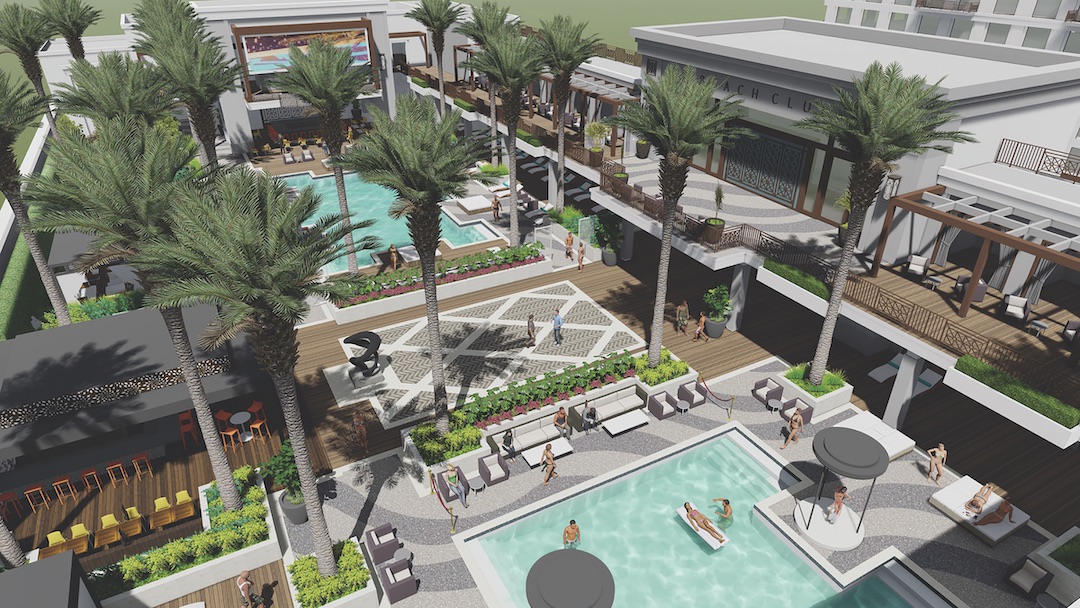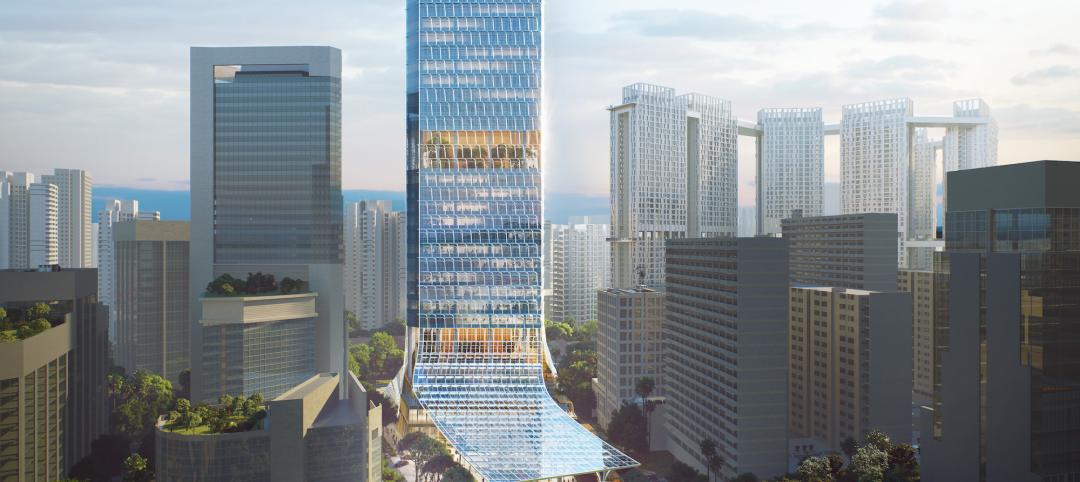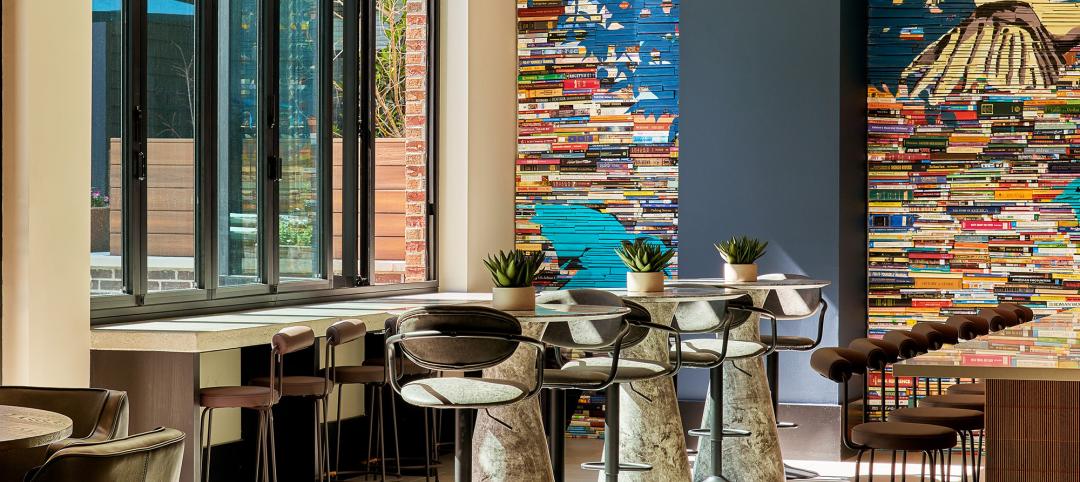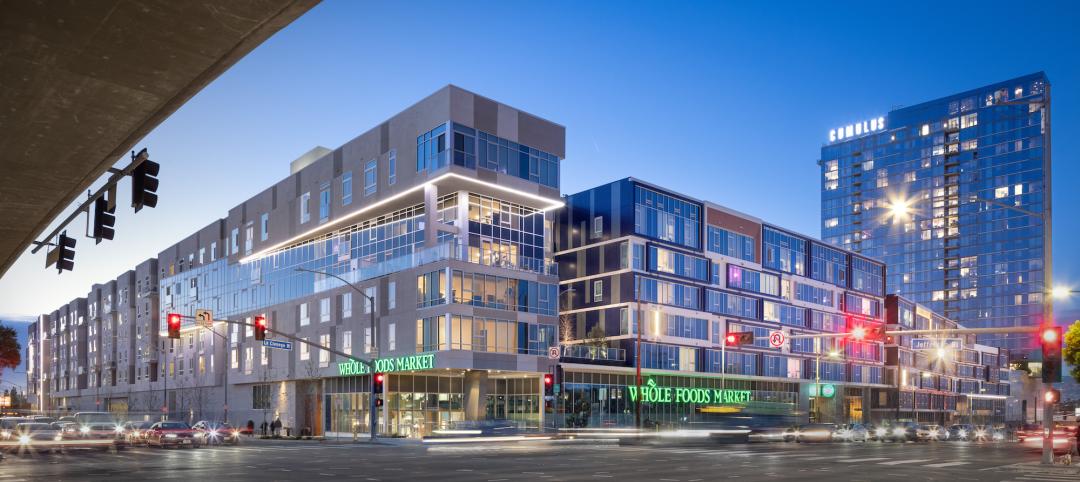During the early months of 2020, construction is scheduled to start in Irvine, Calif., on BANC, a 250-key luxury hotel with 16 condos and 150,000 sf of office space. Sitting atop that building’s parking garage will be a 40,000-sf roof deck with two swimming pools, a 6,500-sf nightclub, and $1.4 million in landscaping.
The landscaping will contribute to providing a level of intimacy for an amenity that accommodates 1,200 people. Another element meant to create “a kind of Las Vegas experience” will be 40 rentable cabanas, including six that fit up to 20 people each, says Rob Budetti, NCARB, CDP, LEED GA, Partner with AO Architects, this project’s designer.
BANC accentuates how roof deck entertainment spaces have become prevalent, even essential, in new construction and as additions to existing buildings. The amenity has become a prominent feature for office buildings, offering “an accessible, secure extension of the occupants’ workplace,” explains John Crump, Vice President and Workplace Studio Leader for SmithGroup’s Washington, D.C., office, whose recent projects include the District Center at 555 12th Street NW, with a 10,000-sf outdoor terrace.
When considering a roof entertainment space, project teams must address several factors: weight loads, moisture control and rainwater management, wind uplift, and occupant safety. The BANC project, for example, must account for the pools’ depth (3½ to 4 feet) and planters with six feet of planting depth, says Diego Alessi, ASLA, Principal and Director of AO Architects’ landscape studio.
There are four types of loads—snow, rain, live, and dead—that any roof deck design manages, says Blair Hildahl, PE, LEED AP, CMO and Founding Partner with Base4, an AE firm based in LaCrosse, Wis. He adds that if shear walls don’t extend above the roof level, the rooftop structure must be able to withstand lateral loads from seismic and wind activity.
“Planning for a roof deck needs to happen at the concept stage,” says Hildahl. “The challenge is to make egress, accessibility, insulation requirements, and waterproofing/drainage work together efficiently.”
That gets complicated when the amenity is being dropped onto an older building whose original structural design only figured on snow and dead loads on the roof.
Chicago-based architecture and construction firm Epstein designed the conversion of the Conrad Chicago from an office building to a hotel. The owner, Lawrence Geller, insisted on adding a dynamic roof, so Epstein had to make sure the building’s columns could handle the extra load. The columns were reinforced with a carbon-fiber spray, and beams were installed under the roof slab, says David Scott, AIA, Epstein’s Director of Hospitality.
Roof deck amenities are typically built in layers, and the lower layers “are probably not going to be touched again for a very long time,” says Craig Hargrove, AIA, LEED AP, CDT, RRC, Senior Vice President and Director of Architecture with Hoffmann Architects. “So how those layers get built is important because they can be fabulously expensive.”
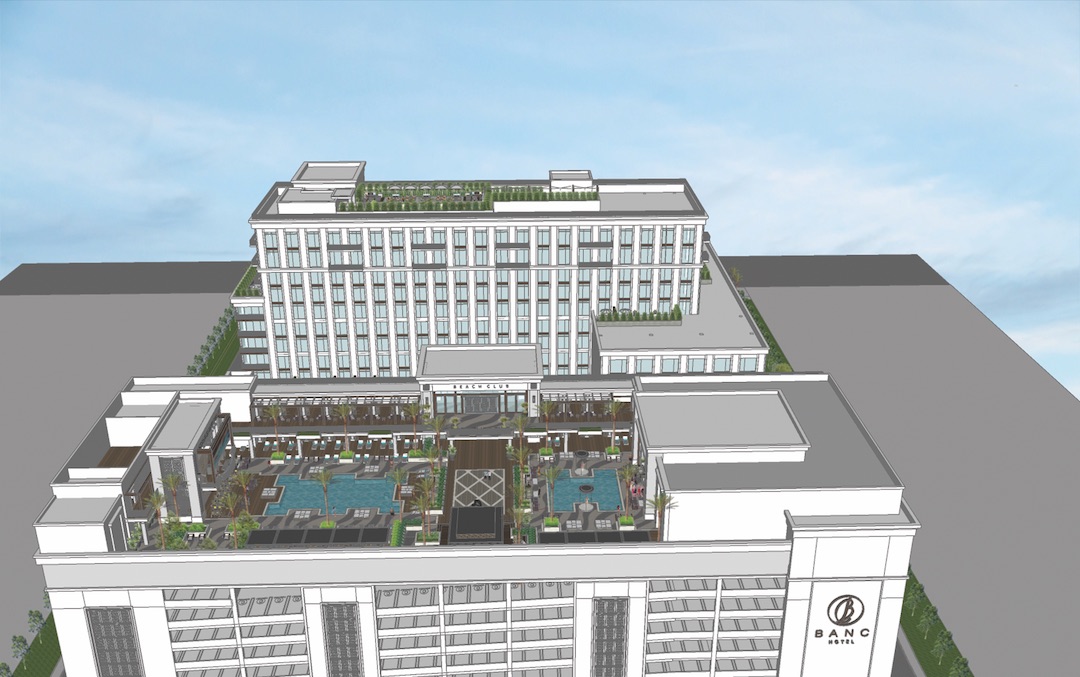
Hargrove notes that a deck must deal with the pitch that funnels rainwater from the roof to drains. But a ½-inch incline in the walking surface “can be noticeable and disturbing psychologically” to people standing on it.
Water can be moved to drains at two levels: at the structural deck where the waterproofing membrane is often installed, and above the deck at the walking surface. If these two surfaces drain independently, each can have two different pitches, allowing the walking surface to have a slope that is more conducive to the use of the space. In other cases, such as with loose laid pavers on a pedestal system over the structural deck, the walking surface can be level with no pitch, because water that might collect at the walking surface will drain to the structural deck between the pavers. The pitch of the roof then moves the water by gravity to the drains.
Another approach—and one that is typically less expensive—is to stack high-density plastic adjustable shims, known as screw jacks, under the corners of the deck to level the panels.
In any reconstruction that involves a roof deck, “it’s important to consider insulation placement,” advises Carl Baldassarra, Principal and Unit Manager with Wiss, Janney, Elstner Associates (WJE). Improper installation below the roof deck can lead to problems such as increased freeze-thaw damage, efflorescence, and condensation.
To control moisture, WJE uses a separate waterproofing membrane, such as hot applied rubberized asphalt, which functions as an air barrier and vapor retarder on the surface of the deck, say WJE Principals Norbert Krogstad and Rich Koziol. (The choice of insulation, says Koziol, is currently confined to extruded polystyrene board because of its water-resistant properties.)
Hargrove of Hoffmann Architects notes that the trick is to keep the roof’s membrane as far away from the asset as possible to protect the membrane, which is a key component in moisture control. Penetration points therefore should be flashed and detailed carefully.
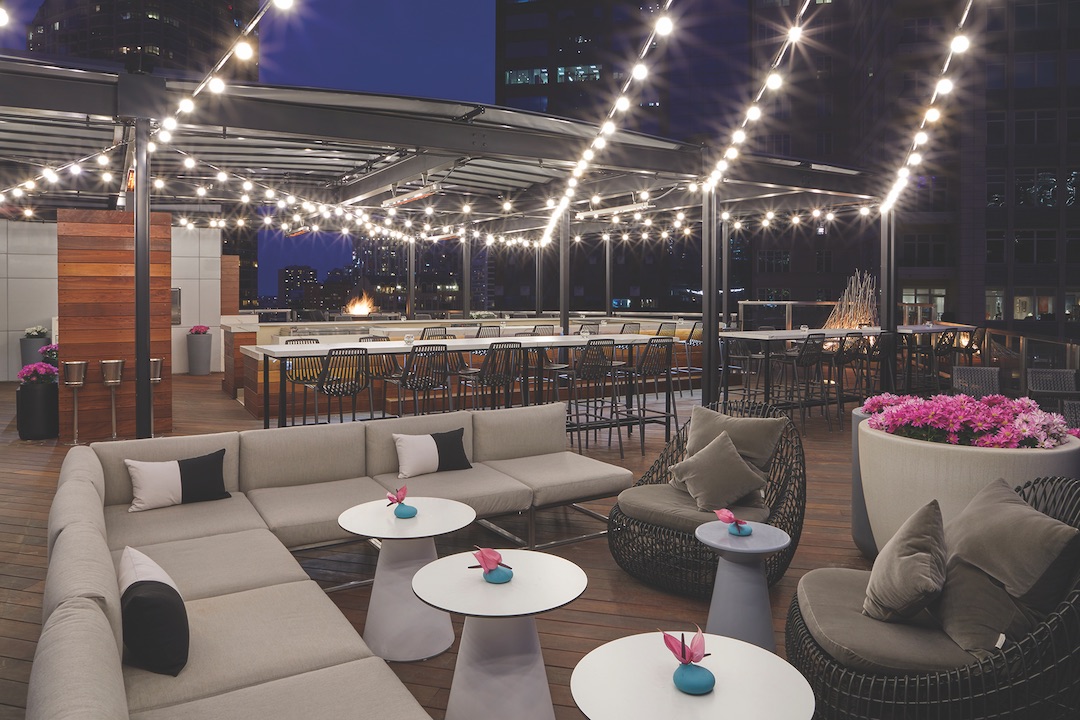 The roof deck amenity atop the Conrad by Hilton hotel in Chicago—an adaptive reuse of an office building—required that the building’s structural columns be reinforced to hold the extra weight. Roof deck amenities must also handle wind lift when installing flooring and furniture. Photo: Neal Burger/courtesy Epstein.
The roof deck amenity atop the Conrad by Hilton hotel in Chicago—an adaptive reuse of an office building—required that the building’s structural columns be reinforced to hold the extra weight. Roof deck amenities must also handle wind lift when installing flooring and furniture. Photo: Neal Burger/courtesy Epstein.
Getting the entertainment space to intersect seamlessly with the roof’s rainwater drainage system is a design imperative. But, Scott cautions, “People don’t want to see what you’re doing to remove water.”
To manage rainwater, BANC’s roof deck amenity will be built on paving materials atop a pedestal-like system that, at different areas, will be between six and 18 inches above the roof. Irrigation and drainage will go through the underdeck space. Planters will have their own drainage system that’s filtered through a biofiltration swale (a requirement in California).
Wind can play havoc on outdoor entertainment spaces. WJE’s Krogstad says that, depending on the space and the height of the building, it might be necessary to anchor the deck or terrace finishes to the structure below. Hargrove points out that manufacturers offer paver-locking systems, in wood or precast concrete, so that the roof itself acts as a large unit of ballast.
See Also: Passive House picks up steam
Base4’s Hildahl notes that the deck height can affect the elevator landing heights. “And if there’s a kitchen or any covered spaces, they need to be raised, too; otherwise you may need a ramp for such spaces.”
The number of exit doors, stairs, sprinklers, standpipes, and elevators that a roof deck entertainment space must have is spelled out in codes that, for an existing building, sometimes lead to reconstruction. “It’s sort of the reverse from the way most buildings are designed” because people are moving back and forth from the top of the building, says Epstein’s Scott. For the Conrad Chicago project, the Building Team had to deconstruct a section of the building to make way for a second stairwell.
In the interest of occupant safety, rooftop spaces used by the public need to be reviewed for guardrail height, says WJE’s Baldassarra. Roof decks on tall buildings might also limit the use of combustible materials such as wood decking.
Related Stories
Giants 400 | Aug 22, 2023
Top 175 Architecture Firms for 2023
Gensler, HKS, Perkins&Will, Corgan, and Perkins Eastman top the rankings of the nation's largest architecture firms for nonresidential building and multifamily housing work, as reported in Building Design+Construction's 2023 Giants 400 Report.
Adaptive Reuse | Aug 17, 2023
How to design for adaptive reuse: Don’t reinvent the wheel
Gresham Smith demonstrates the opportunities of adaptive reuse, specifically reusing empty big-box retail and malls, many of which sit unused or underutilized across the country.
Sustainability | Aug 15, 2023
Carbon management platform offers free carbon emissions assessment for NYC buildings
nZero, developer of a real-time carbon accounting and management platform, is offering free carbon emissions assessments for buildings in New York City. The offer is intended to help building owners prepare for the city’s upcoming Local Law 97 reporting requirements and compliance. This law will soon assess monetary fines for buildings with emissions that are in non-compliance.
Office Buildings | Aug 10, 2023
Bjarke Ingels Group and Skanska to deliver 1550 on the Green, one of the most sustainable buildings in Texas
In downtown Houston, Skanska USA’s 1550 on the Green, a 28-story, 375,000-sf office tower, aims to be one of Texas’ most sustainable buildings. The $225 million project has deployed various sustainable building materials, such as less carbon-intensive cement, to target 60% reduced embodied carbon.
Multifamily Housing | Jul 31, 2023
6 multifamily housing projects win 2023 LEED Homes Awards
The 2023 LEED Homes Awards winners in the multifamily space represent green, LEED-certified buildings designed to provide clean indoor air and reduced energy consumption.
High-rise Construction | Jul 26, 2023
A 33-story Singapore tower aims to reimagine work with restorative, outdoor spaces
Architecture firm NBBJ has unveiled design details for Keppel South Central, a commercial tower in Singapore. The project, which is slated for completion in late 2024, will transform the original Keppel Towers into a 33-story, energy-efficient building that aims to reimagine work by providing restorative spaces and connections to the outdoors.
Designers | Jul 20, 2023
Mary Cook Associates brews up coffeehouse-inspired apartment community
The MCA design team worked closely with the developer and design architect to create an interior concept inspired by Decatur, Ga.’s, tree-lined streets, boutique retail, and vibrant restaurant and coffee shop scene.
Mass Timber | Jul 11, 2023
5 solutions to acoustic issues in mass timber buildings
For all its advantages, mass timber also has a less-heralded quality: its acoustic challenges. Exposed wood ceilings and floors have led to issues with excessive noise. Mass timber experts offer practical solutions to the top five acoustic issues in mass timber buildings.
Mixed-Use | Jun 29, 2023
Massive work-live-play development opens in LA's new Cumulus District
VOX at Cumulus, a 14-acre work-live-play development in Los Angeles, offers 910 housing units and 100,000 sf of retail space anchored by a Whole Foods outlet. VOX, one of the largest mixed-use communities to open in the Los Angeles area, features apartments and townhomes with more than one dozen floorplans.
Standards | Jun 26, 2023
New Wi-Fi standard boosts indoor navigation, tracking accuracy in buildings
The recently released Wi-Fi standard, IEEE 802.11az enables more refined and accurate indoor location capabilities. As technology manufacturers incorporate the new standard in various devices, it will enable buildings, including malls, arenas, and stadiums, to provide new wayfinding and tracking features.


